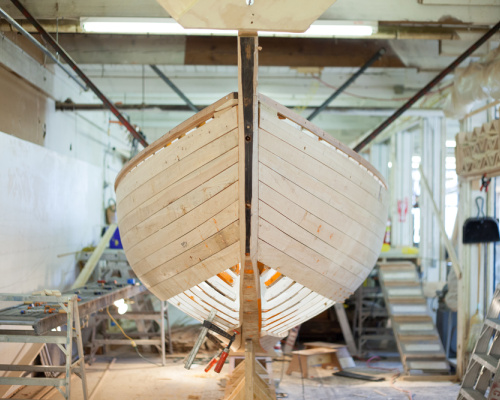Building Boats That Can Float: Drupal for EdTech
Date
In Portland, Oregon, the start of summer means more and more people heading out to the Willamette River for recreation. Every time I see a boat while out on my paddle board, it brings to mind something my boss (who’s also a competitive sailor) often says about software:
“You can’t buy half a boat, because half a boat don’t float.”
The metaphor here is that a software product has to be usable to offer any value; if a user can’t use it, it’s not a product, just like a 90%-finished boat may not float. When we work with clients to match their business needs to an appropriate solution, we’re always mindful of creating something that will be usable—something that actually floats. To extend our metaphor just a tad further, the Internet’s sea floor is littered with software shipwrecks of what happens when this isn't true: the initial Cover Oregon website, the problematic launch of the game Cyberpunk 2077, and the fatal bugs in the Boeing 737 Max software. Like boats, software comes in many shapes, sizes, and budgets, but whatever we end up building, we make it “seaworthy” and always keep our eyes on the lookout for icebergs.
From Canoe to Cruiseliner, Drupal is Made for Shipbuilding
Over my career developing software, Drupal is the tool I’ve used the most. Reflecting on the projects I've been involved in during my decade of Drupal, I appreciate how spectacularly successful it's been at building "boats'' of different shapes, types, and sizes. You can use Drupal to build ships for heavy work and huge crews, with massive gears and pulleys, complex refrigeration, and labyrinthine quarters below deck. You can also use Drupal to make the most streamlined sculler.
Drupal-based web products we’ve built recently for clients include:
- A platform to deliver classroom projects, resources, and professional learning experiences; supporting multiple user roles, group capabilities, and complex publishing and operational workflows
- A portal for developing and delivering digital curriculum to institutional and individual licensees, including content, users, and access rights management systems
- A website providing new student-facing math activities in English and Spanish on a monthly schedule, with a mobile-first app-like experience
If you're not familiar with Drupal, it is most often referred to as a content management system (“CMS”), which is accurate, but undersells its capabilities. We think of it as a platform for building content-rich web applications. It would take a longer piece than this to describe all of Drupal’s virtues, but two things we value are:
- It provides a tremendous number of no-code site-building tools immediately, along with a sophisticated programming interface necessary for experienced developers to add capabilities.
- It’s open-source and open-licensed with a mature ecosystem of developers, a proven track record running very high visibility websites, and robust roadmap that extends years into the future.
With nine major versions in its 20-year release history, Drupal offers the high measure of stability we and our clients want for their web-based products and services.
Start Small and Float First
There's a minor line, almost an aside, spoken by Claude Rains' character early in the film Lawrence of Arabia: "Big things have small beginnings." It has stuck with me because, as quietly and wryly as it’s delivered, it crackles with foreshadowing and future portents. It also resonates strongly with my experience building software: some of the most substantive and successful products I’ve seen started small but useful.
That’s why we help clients work backwards from their “dream boat” to start from the smallest boat possible to achieve what their users actually need and use first, and only then iterate to make it bigger and better. Using a technology like Drupal means we can quickly design and build a “boat” that matches our clients’ immediate interests and fits their timetable and budget, while also providing the framework to expand into the future as their needs grow.
Passage Making with Drupal
The edtech platform that I was first hired to build for one of Clarity’s clients will soon be updated with its 31st release; this number “31” represents eight years of effort by dozens—if not hundreds of people—and thousands of tasks and lines of codes completed. Although the client’s website started as a place for a few pilot schools to preview curriculum in the process of being developed, the number of users has now grown by a factor of 1,000 and the traffic has nearly doubled every school year since launching in 2013. We’ve developed and extended from the original website so much, it’s almost unrecognizable, but if you look closely—hammered into the hull—you might find a little message that reads: “powered by Drupal and Clarity Innovations.”

